Email:
Question: What are the advantages of vision detection systems based on deep learning (AI-Intsoft) over traditional vision?
Answer: It overcomes the problems of traditional algorithms being disturbed by complex backgrounds and unable to consistently classify defect types. Therefore, deep learning has more advantages in the field of defect detection.
Surface defect detection is an image processing system integrated with optical components, image processors, software algorithms, etc., which covers professional disciplines such as optical principles, software technology, and image processing technology; it detects and identifies common surface defects (scratches, breakages, scrapes, dirt, streaks, bright spots, etc.) of objects being detected in real time. Some surface detection images have interference factors from relatively complex backgrounds, which have a great impact on the identification and judgment of surface defects. Therefore, it places extremely high capability requirements on the detection system. Traditional image processing technology can no longer meet current production applications.
With the rapid development of AI technology, artificial intelligence has gradually begun to be used in the industrial field. Intsoft Technology has applied deep learning technology to defect detection equipment in various industrial fields and developed Intsoft-AI Visual Inspection System V1.0 based on artificial intelligence deep learning technology.
AI-Intsoft System can be used for defect recognition, object classification, positioning and other functional applications. It can be used in 3C products and components, semiconductors, LEDs, medicine, automotives and other industries. It combines traditional algorithms to achieve high-precision surface defect detection for the following types of products:
Deep learning is different from traditional industrial machine vision, does not require professionals to customize the development of algorithms, only a portion of the NG and OK sample images in the early stage, used for defect annotation training can be completed to establish the model, and later encountered when new types of defects, only need to complete the new types of defect samples to train the optimization model will be able to complete the detection of new defects.
Application Case 1: Cell phone Charger surface defect detection
Detection Items: Detects 6 types of defects on 5 sides of the product: scratches, pitting (dents), nicks, soiling, bright marks, moldings.
Detection requirements:
1. Defective product omission rate of 0.3% or less.
2. Product false positive rate within 5%.
3. Dirty defects: In Stain Appearance Benchmarking Card, less than 0.1mm² or less OK;
4. Point injury and scratch: 0.02~0.08mm² = 2 or more NG, 0.08~0.1mm² =1 NG.
Product defects analysis:
1. The surface structure of the product for the rough surface (similar to frosted texture), for the electroplating molding stage, the surface roughness has many pits affecting the imaging quality.
2. Scratch defects for surface concave defects may have damaged the plating layer, defective pit shapes are thin and are deeper, different shapes, different locations;
3. Point injury defects are surface concave defects, the area is small, but the distribution is wide, varying depths.
Die printing defects for product production are caused by defects in the die. In the plating after detection, the product surface has not been too different, defects are more minor, human eye is also more difficult to identify.
Dirty bright print defects on the product surface,the plating layer above the presence of dirty and bright prints, did not damage the plating layer.
Detection program:
Using linear equipment, robotic loading and unloading, 5-station detection, fixtures can be rotated, strobe light source, step-by-step photo product surface defects, deep learning algorithms to process the image, the full realization of the surface of defect detection, according to the results of the detection of the automatic filling of the tray, automatic stacking of the tray receipt. (As shown below)
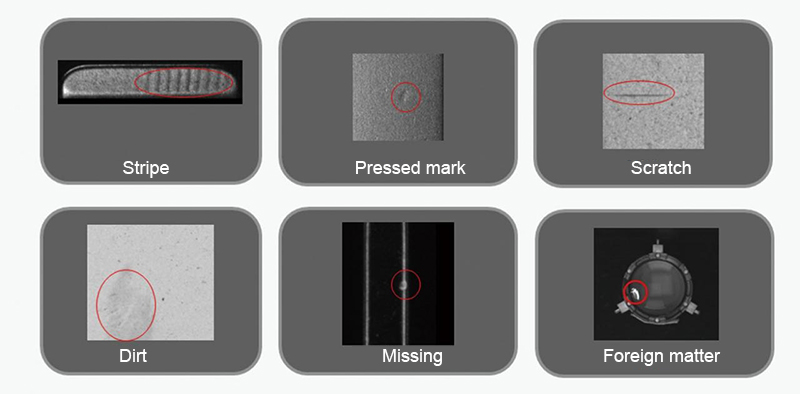
Fig 1: Common Defect Detection in the 3C Industry
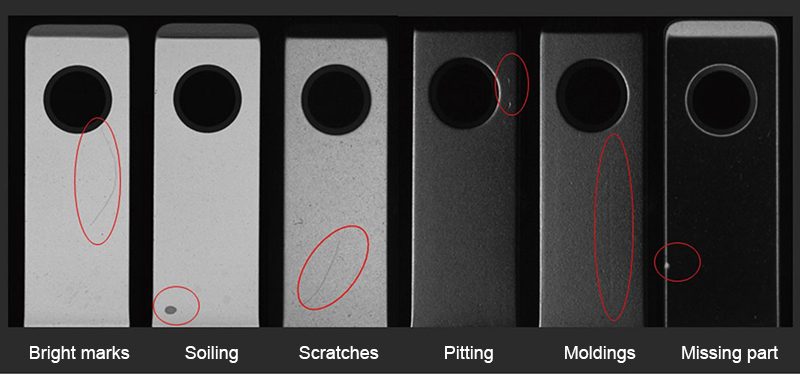
Fig 2 Detection Result
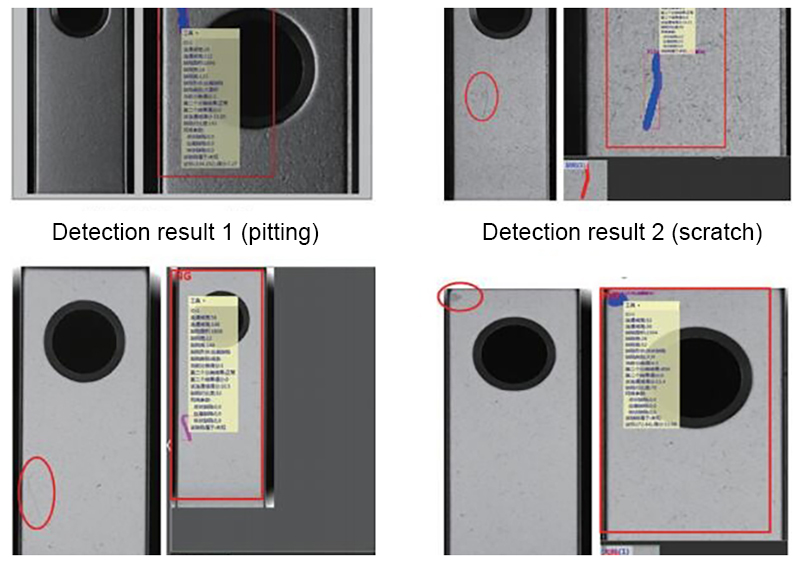
Fig 3: Defect Types
Application Case 2: Type-C Charger surface defect detection
Detection Items: Detect products with defective aluminum shavings, missing pins, foreign plastic shavings, plastic damage, metal wires at the bottom of the tongue, leakage of B points on tongue terminals and other cosmetic defects.
Detection requirements:
1. defective product leakage rate of 0%.
2. Product false positive rate within 5%;
Detection program:
Adopt linear automatic equipment, docking customer automated production line, a total of 4 inspection stations, the product through vibratory in-line feeder, moving the load to the detection station for photo detecting, the use of deep learning algorithms combined with traditional algorithms to detect and identify the defects of the product, and then according to the detection effect of OK \NG classification. The figure is show below.
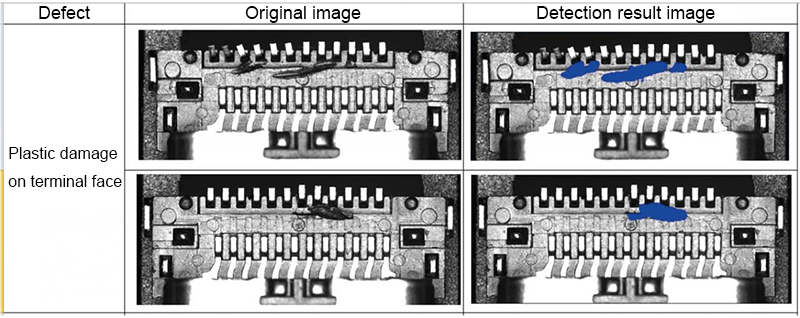
Detection result 1
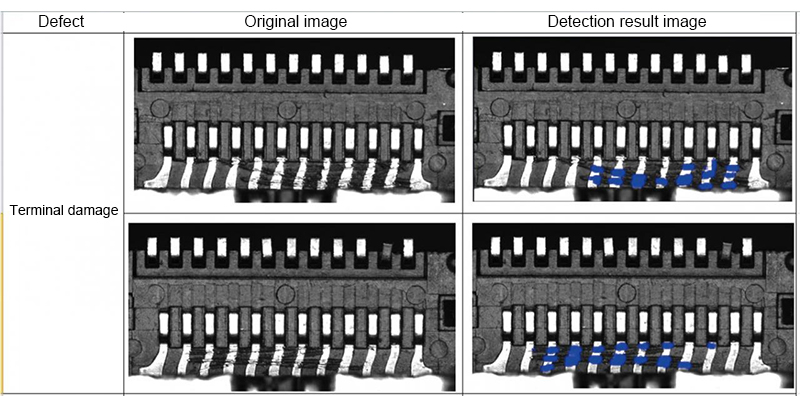
Detection result 2
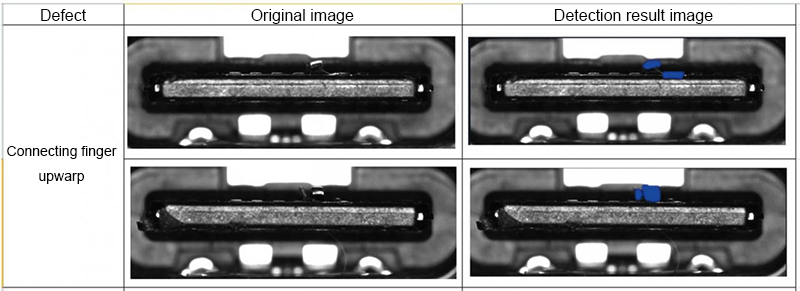
Detection result 3
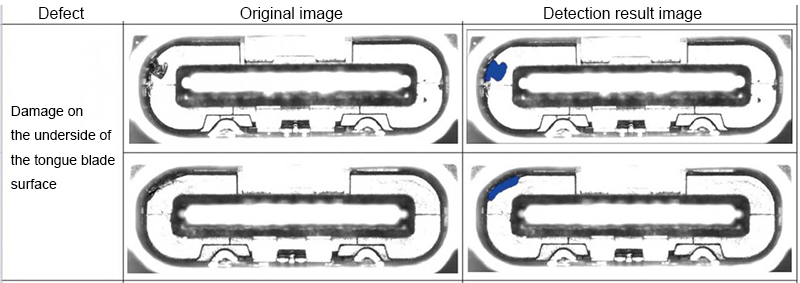
Detection result 4
The above brief description is only part of the application scenarios, based on deep learning (AI-Intsoft) vision inspection system, which has a strong recognition ability, defect detection ability.
In most automated and semi-automated industries, it can solve more than 95% of product quality detection problems.
The problems of traditional machine vision algorithms being interfered with complex backgrounds and the inability to categorize defect types stably can be easily solved with the deep learning-based (AI-Intsoft) vision detection system.
(AI-Intsoft vision detection system can do more, and we will keep updating and iterating AI-Intsoft.
In the future, we hope that AI-Intsoft will be applied in various industrial fields, help more enterprises to do quality control, solve more subtle inspection problems in complex environments, and make more products achieve zero defects.